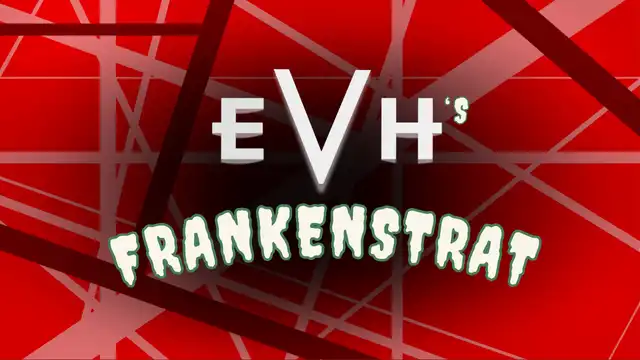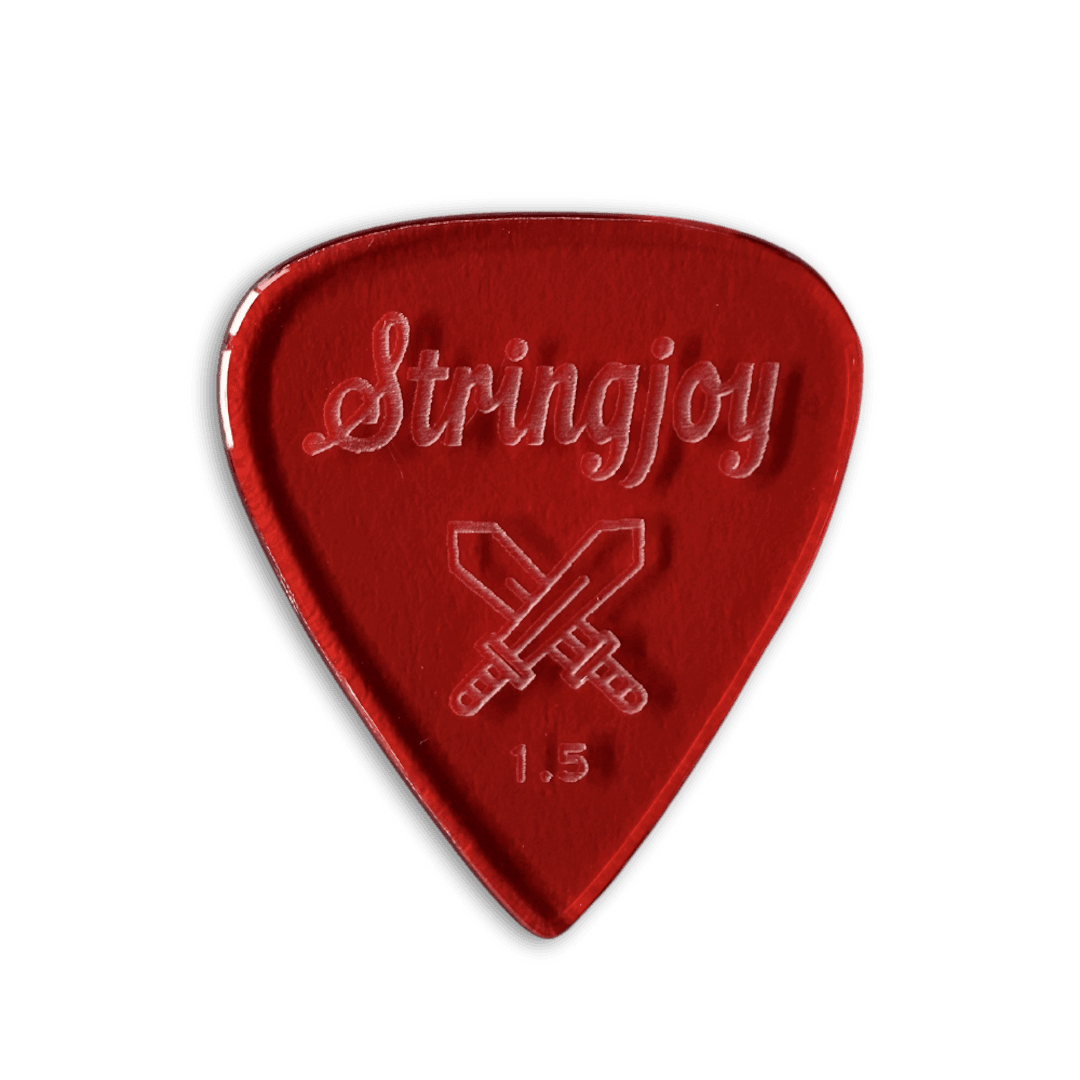Eddie Van Halen's Frankenstrat


Eddie Van Halen’s “Frankenstrat”: The Monster That Changed Rock
Eddie Van Halen’s “Frankenstein” Stratocaster is one of the most recognizable guitars in rock history.
A symbol of creativity, rebellion, and raw musical firepower, the “Frankenstrat” wasn’t born in a custom shop—it was cobbled together in a garage by a guy who refused to accept that perfection didn’t exist yet. Part science experiment, part art project, it reflects Eddie’s dual genius as both a guitarist and a mad scientist of tone.
Let's pick apart the history and magic of Van Halen's iconic instrument.

Before the Monster: Eddie Van Halen’s Origins
Born in Amsterdam in 1955 and raised in Pasadena, California, Eddie Van Halen didn’t start out as a guitar hero. In fact, he and his brother Alex took classical piano lessons as kids—until Eddie picked up a guitar and never looked back. By the mid-1970s, the Van Halen brothers had formed their eponymous band, combining Eddie’s blistering solos and innovative tapping technique with David Lee Roth’s over-the-top charisma.
Albums like Van Halen (1978) and 1984 redefined rock, with Eddie’s playing pushing the boundaries of what six strings could do. But Eddie wasn’t satisfied being just great at guitar—he wanted to reinvent it.
It’s Alive! The Birth of the Frankenstrat
In the mid-’70s, no mass-market guitar had everything Eddie wanted. The Fender Stratocaster had the feel and playability he loved, but not the fat, overdriven tone of a Gibson Les Paul. So, Eddie did what any true gear tinkerer would do—he built his own mutant guitar.
He started with a $50 factory-second Strat-style body from Boogie Bodies, a small Washington company known for making high-quality parts for Charvel.
Eddie equipped it with a maple neck featuring a large CBS-era Fender headstock and then raided an old Gibson ES-335 for a PAF humbucking pickup. The problem? The pickup didn’t fit. The solution? A power tool and zero hesitation. He routed the body by hand, leaving rough edges that would become part of the Frankenstrat’s unpolished charm.
Eddie wired the guitar himself, keeping it stripped-down and functional—just one volume knob (labeled “Tone,” because why not?) and no tone controls. The result was a sound that was pure Van Halen: high gain, high energy, and unapologetically raw.

The Look: Stripes, Scratches, and Attitude
Visually, the Frankenstrat was as wild as it sounded. Eddie’s DIY paint job—a black base, white stripes made from masking tape, and a later layer of candy-apple red—created a now-iconic pattern that became his visual signature. Every chip, dent, and scuff told a story from the road, like an autobiography in lacquer.
Anatomy of a Frankenstrat
Like its literary namesake, the Frankenstrat was a mashup of spare parts and brilliant improvisation:
Body: A discounted Boogie Bodies Strat-style blank, deemed imperfect by the factory—perfect for Eddie.
Neck: A maple CBS-style Fender neck, later swapped several times as Eddie fine-tuned the feel.
Pickup: A Gibson PAF humbucker, rewired for maximum output and clarity.
Bridge: Originally a Fender tremolo, later upgraded to a Floyd Rose locking system so Eddie could dive-bomb without going out of tune.
Electronics: One volume knob, zero nonsense.
Eddie never saw the Frankenstrat as “finished.” It was a living project, evolving as his playing evolved—a kind of sonic Frankenstein’s lab in constant motion.
The Sound of a Revolution
The Frankenstrat wasn’t just for show. It became Eddie’s weapon of choice on tracks like:
“Eruption” – The two-minute instrumental explosion that made every guitarist re-evaluate their life choices.
“Ain’t Talkin’ ‘Bout Love” – Gritty, sharp, high-gain, and unmistakably Eddie.
“Panama” and “Hot for Teacher” – Songs where Eddie's humor and voice are undeniably channeled through his Frankenstrat.
Legacy and Afterlife
Though Eddie eventually retired the original Frankenstrat, its spirit lived on in countless imitations.
In the 2000s, he partnered with Fender to create official EVH replicas—some so detailed they even replicated the wear and cigarette burns of the original. These limited-edition models sold for tens of thousands of dollars, while the more affordable EVH Striped Series gave fans a chance to own their own slice of rock history without needing a platinum record first.
After Eddie’s passing in 2020, the original Frankenstrat made the rounds in the Smithsonian’s National Museum of American History as well as the Metropolitan Museum of art. Today, it's safe and sound in the possession of Eddie's son, Wolfgang.
Franken-Strings
Gear to make your axe come alive.
A Legacy of DIY Genius
Eddie Van Halen didn’t just change how guitars were played—he changed how they were made. His DIY spirit inspired generations of players to tear apart their gear, chase new tones, and believe that perfection isn’t found, it’s built.
The Frankenstrat is more than a guitar—it’s a philosophy. And at Stringjoy, we can’t help but admire that ethos. Because like Eddie, we believe the best tone starts with curiosity, courage... and maybe a little chaos.
Other Posts you may like

Guitar Strings Order: How the Guitar is Tuned and Why

Two Handed Tapping: Our Top 8 Tappers of All Time

Which Guitar Strings Wear Your Fret Wire Down More?

What is Nashville Tuning? Its History, Best Guitar Strings & Uses

Guitar Scale Length Explained: String Tension & Playability

What Guitar Strings I Used To Play...
0 Responses
Leave a Reply
Your email address will not be published. Required fields are marked *









